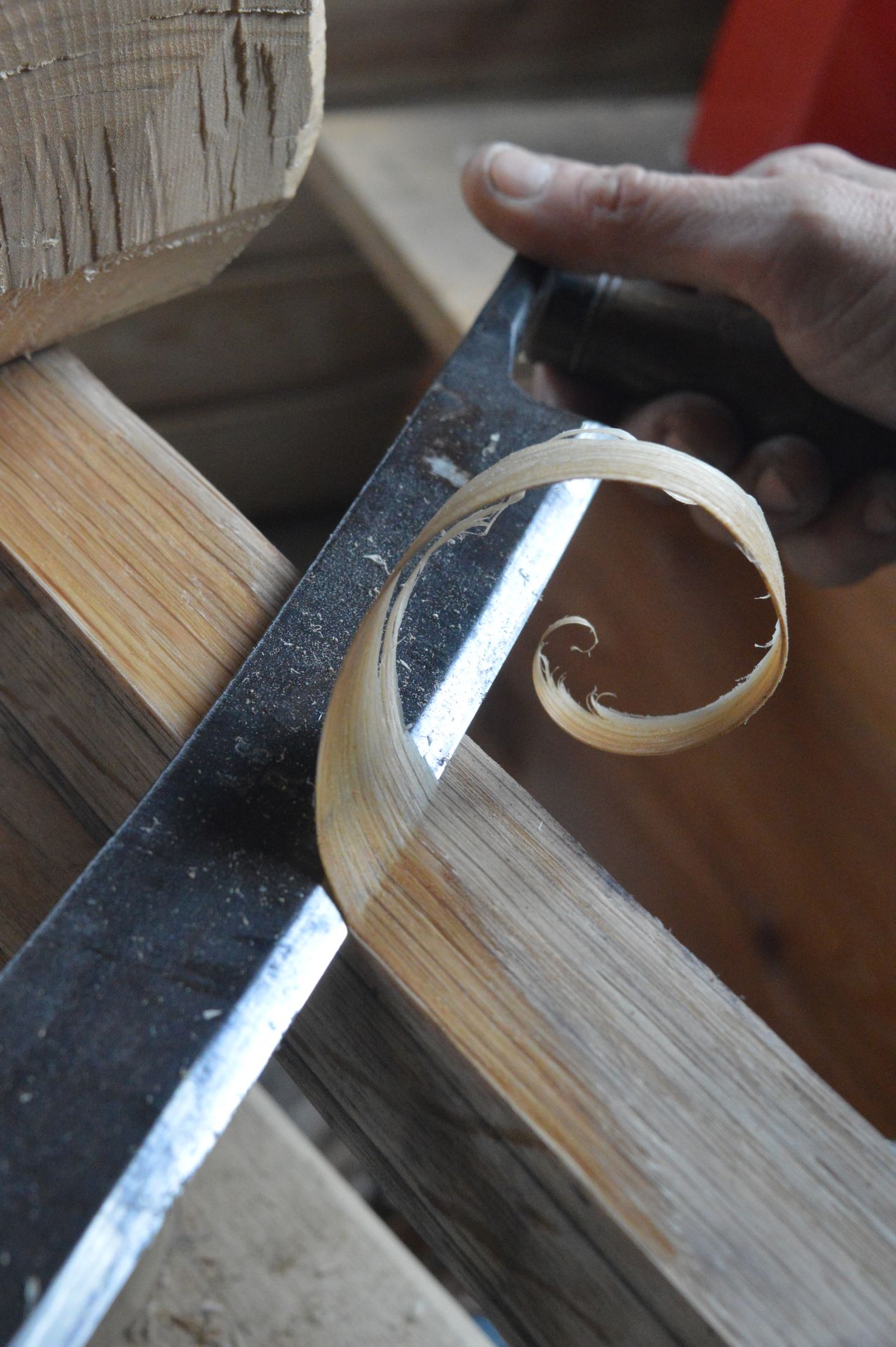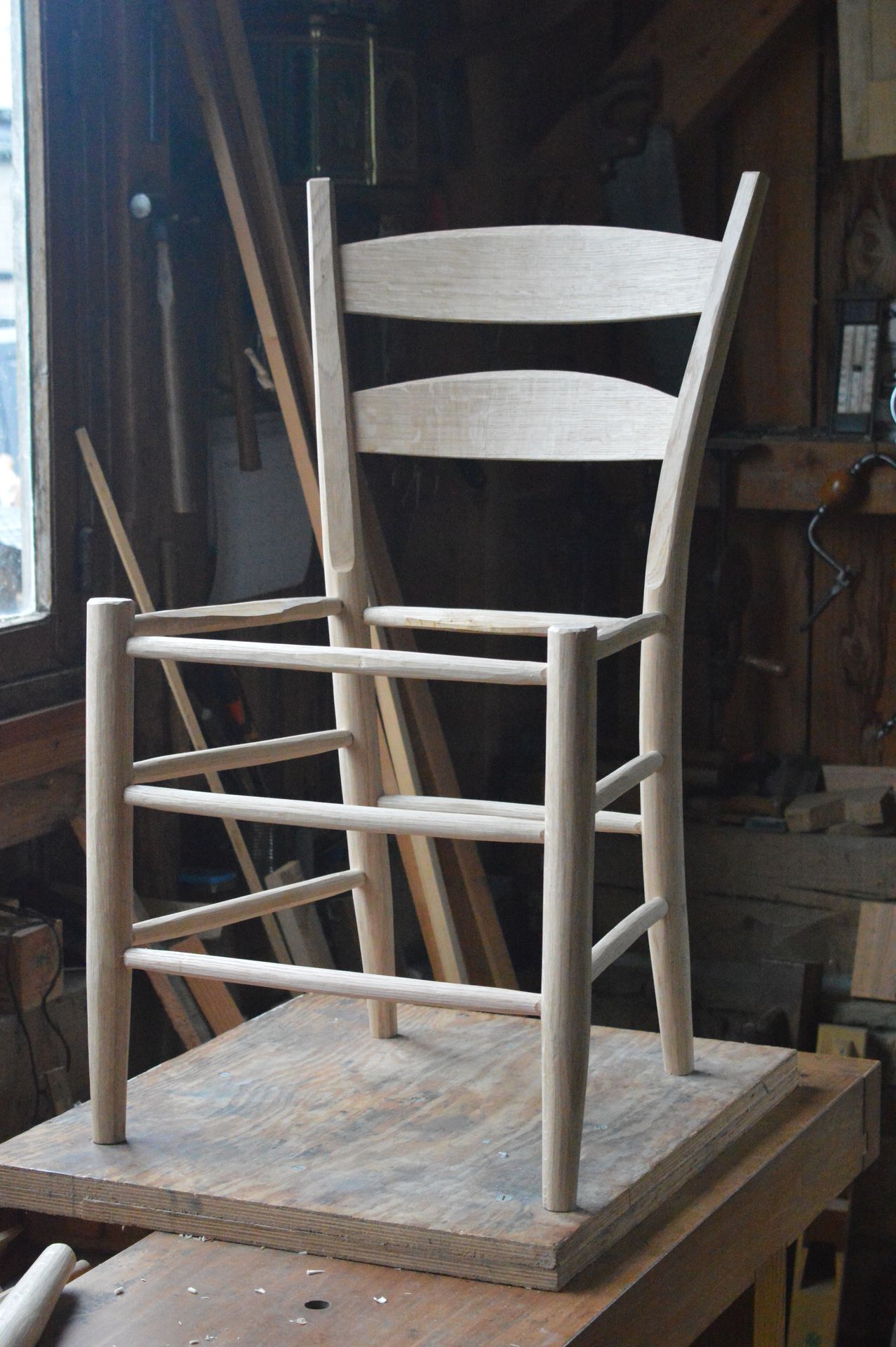From tree to chair
The basics of making a chair from a tree using traditional hand tools
To make a chair, I start out by splitting the logs into sections a little larger than the final dimensions.
Then, I shape the pieces with a draw knife, working on my shaving horse (a traditional work holding vice, the ideal partner for the plane).


The components of the chair can be entirely shaped with a draw knife and a spoke shave, or with a draw knife and a lathe (mine is a foot powered pole-lathe).


The curved chair parts are steam-bent.


When the time comes to assemble the chair, the legs must be dry, that is to say, they have more or less the same degree of humidity as the surrounding air. The rungs, on the other hand, are much drier. Thus, the tenons at their ends swell slightly in the mortises, making the assemblies very solid and durable even though they are not glued.


As all parts are cleft rather than sawn, the grain of the wood is respected, which means that the parts are guaranteed optimum strength and can often have a smaller diameter than if they were sawn.
Thanks to this ancient technique, the chair is lighter, more elegant, stronger and has the unique character of true handwork!

Each chair is treated only with natural oil.
Green woodworking also has a light ecological footprint. The wood comes from local forests and small diameter trees normally intended for firewood. Transport is limited, as the wood does not pass through the sawmill. Finally, simple hand tools are best suited for most operations; power tools are not necessary.
